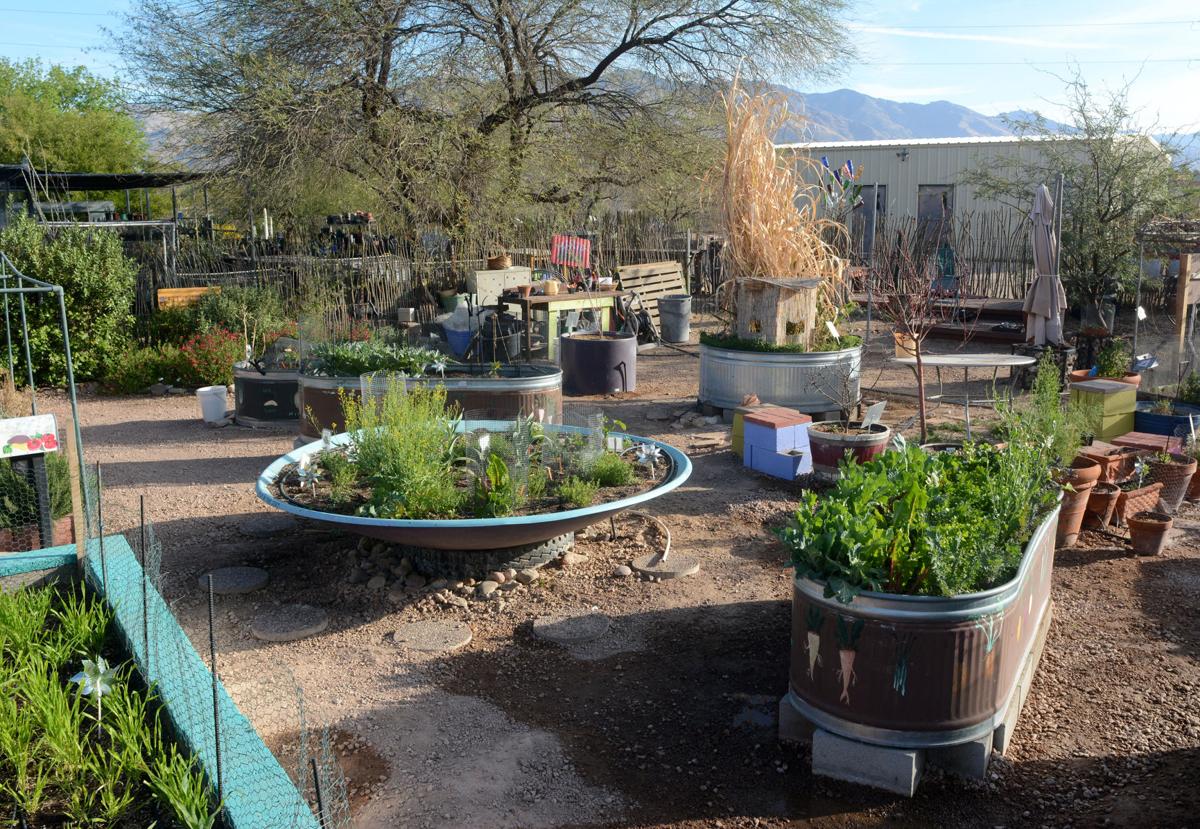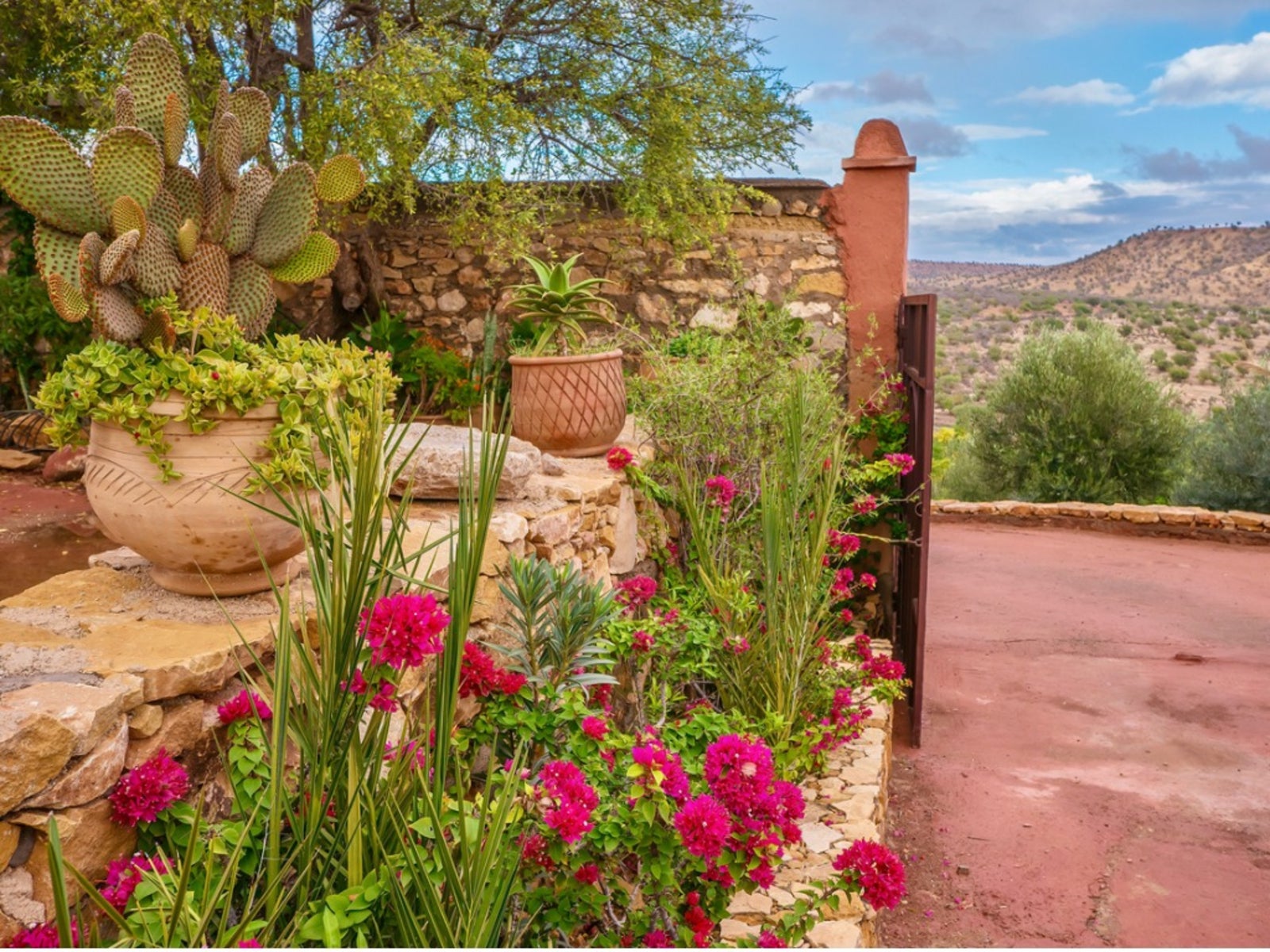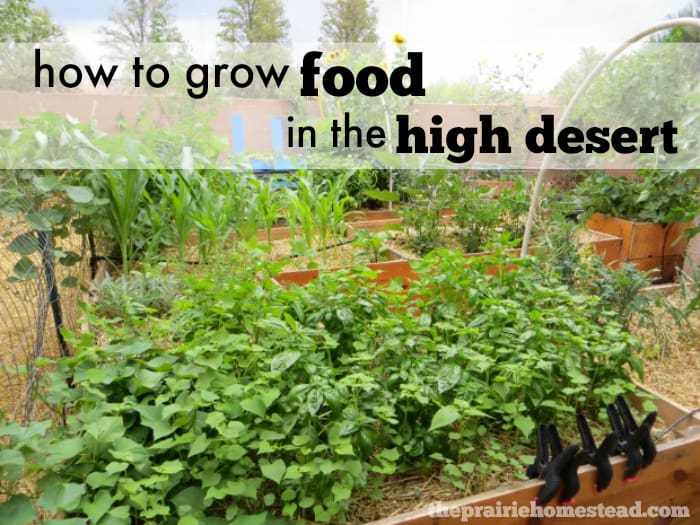Imagine stepping out into your backyard and being greeted by a lush, thriving garden, even in the heart of the desert. Sounds like a dream, right?
But it doesn’t have to be. Gardening in the desert is not only possible; it’s an adventure waiting to happen. You might think the arid climate and relentless sun make it impossible to grow anything, but that’s where the magic of desert gardening comes in.
With the right techniques and a little patience, you can transform your outdoor space into a vibrant oasis. Curious about how you can make this transformation happen? Let’s dive into the secrets of desert gardening and turn your garden dreams into reality.

Credit: tucson.com
JUMP TO TOPIC
Desert Gardening Basics
Gardening in the desert presents unique challenges and rewards. The arid environment requires understanding and adaptation. With the right strategies, a thriving garden is possible. This guide will cover the basics of desert gardening. You’ll learn about climate and water management. Let’s dive in.
Understanding Arid Climates
The desert climate is hot and dry. Temperatures can soar during the day. Nights are often cooler, offering relief. Rainfall is rare and unpredictable. This creates a harsh environment for plants. Knowing the climate helps in choosing the right plants. Select species that can withstand these conditions.
Desert soil is often sandy or rocky. It drains quickly, leaving little moisture for plants. Amending the soil with organic matter can improve water retention. This creates a better growing environment.
Adapting To Limited Water Resources
Water is a precious resource in the desert. Efficient use is crucial for gardening success. Drip irrigation systems deliver water directly to plant roots. This reduces evaporation and wastage. Mulching around plants conserves moisture and cools the soil.
Choose drought-tolerant plants for your garden. These species need less water to thrive. Native plants are often well-adapted to local conditions. Grouping plants with similar water needs can optimize watering.
Collecting rainwater is another way to supplement garden water. Use barrels to capture and store rainwater. This provides a sustainable water source during dry spells.

Credit: www.gardeningknowhow.com
Choosing The Right Plants
Gardening in the desert presents unique challenges. Choosing the right plants is essential for success. The harsh environment demands careful selection. Water scarcity and extreme temperatures are key factors. Selecting suitable plants helps them thrive.
Drought-resistant Species
Drought-resistant plants are crucial for desert gardens. These species can survive with little water. Succulents, like cacti, store water in their leaves. They handle dry spells well. Lavender and sage are also excellent choices. Their roots reach deep for moisture. These plants require minimal care.
Native Vs. Non-native Plants
Native plants are adapted to the local climate. They thrive naturally in desert conditions. They need less water and are low-maintenance. Examples include desert marigold and agave. Non-native plants can also flourish. They require more attention and resources. Choose plants that suit your garden’s needs. Balance native and non-native species for beauty and sustainability.
Soil Management
Gardening in the desert presents unique challenges, especially when it comes to soil management. The arid climate often leaves soil dry and lacking essential nutrients. However, with a bit of care and the right techniques, you can transform your desert garden into a thriving oasis. Let’s explore how you can improve soil quality and effectively use mulching techniques.
Improving Soil Quality
Desert soil typically lacks organic matter, making it hard for plants to thrive. One way to enrich your soil is by adding compost.
Compost provides nutrients that improve soil structure and water retention. Start a compost pile using kitchen scraps like fruit peels and coffee grounds. You can also add grass clippings and dry leaves.
Another method is to mix in well-rotted manure or worm castings. These options are rich in nutrients and help maintain soil moisture. Consider conducting a simple soil test to identify specific deficiencies. This will guide you in choosing the right amendments.
Mulching Techniques
Mulching is a powerful tool in desert gardening. It helps retain moisture and regulates soil temperature. Organic mulches like straw, wood chips, or shredded bark are great choices.
Spread mulch evenly over the soil surface, leaving space around the plant stems. This prevents rot and promotes healthy growth. You can also use inorganic mulches like pebbles and gravel. They reflect sunlight, reducing evaporation and keeping the soil cooler.
Think about the aesthetic appeal of your mulch choice. While organic mulches break down and enrich the soil, inorganic ones provide a polished look. So, which type will best suit your garden’s needs?
Remember, soil management is the backbone of desert gardening. With careful attention to soil quality and the right mulching techniques, you can cultivate a garden that defies the odds. What changes will you make to transform your soil today?

Credit: www.theprairiehomestead.com
Water Conservation Strategies
Gardening in the desert presents unique challenges. Water scarcity tops the list. Implementing effective water conservation strategies is crucial. These strategies ensure plants thrive in harsh conditions. Smart techniques can help save water and maintain a healthy garden.
Efficient Irrigation Methods
Drip irrigation is a smart choice for desert gardening. This method delivers water directly to the plant roots. It minimizes water loss through evaporation. Soaker hoses are another efficient option. They distribute water evenly across the soil surface. Using timers with irrigation systems can enhance efficiency. Set them to water during cooler times. Early morning or late evening is ideal. This reduces evaporation and saves water.
Rainwater Harvesting
Rainwater harvesting is a sustainable practice. It collects rainwater for future use. Install rain barrels to capture runoff from roofs. This water can irrigate your garden during dry spells. Ensure barrels are covered to prevent mosquito breeding. Consider building a rain garden. It helps channel rainwater into the soil. This reduces water waste and supports plant growth. Rainwater harvesting not only conserves water. It also reduces your water bill.
Designing A Desert Garden
Creating a desert garden involves choosing plants that thrive in arid conditions. Succulents and cacti are ideal for their resilience and low water needs. Incorporate rocks and sand to mimic natural landscapes, ensuring a sustainable and visually appealing garden.
Designing a desert garden might seem like a daunting task at first. However, with the right approach, it can turn into a rewarding project. Imagine transforming a barren landscape into a vibrant oasis that thrives under the sun’s intense gaze. A desert garden can be a testament to nature’s resilience and adaptability. Finding the right balance between plant selection and structural elements is key. As you design your desert garden, consider how these elements can work together harmoniously to create a stunning and sustainable outdoor space. ###Incorporating Hardscapes
Hardscapes are crucial in desert garden design. They provide structure and help retain moisture. Think about pathways made of gravel or crushed stone that guide you through your garden. These materials are not only aesthetically pleasing but also practical for desert conditions. Consider adding raised beds with natural stone borders. This can elevate your garden’s visual interest while also helping with drainage. A personal favorite is using large boulders as focal points, which can bring a sense of permanence and stability. Have you considered adding a dry stream bed? It mimics a natural watercourse, adding depth and texture to your garden. It also serves as a functional element for directing rainwater. ###Creating Shade And Shelter
Shade is essential in a desert garden. Without it, plants and people alike would struggle under the unrelenting sun. Introduce pergolas or shade sails to offer respite from the heat. These structures can also serve as beautiful features that draw the eye upward. Planting trees like the desert willow or mesquite can also provide natural shade. Their canopies offer shelter and help reduce ground temperature. It’s fascinating how these trees, with their sparse foliage, manage to create such effective shade. Have you thought about using tall cacti or succulents as natural barriers? They can provide both windbreaks and visual screens. Imagine enjoying a quiet corner of your garden, sheltered from the elements by these hardy plants. Designing a desert garden is a journey of creativity and practicality. As you blend hardscapes with shade elements, you’re not just crafting a garden—you’re creating a sanctuary. What unique touches will you add to your desert garden to make it truly yours?Seasonal Gardening Tips
Gardening in the desert can be challenging yet rewarding. The key is to adapt to the unique climate conditions. Understanding seasonal changes is crucial. Here are some tips to help you thrive in desert gardening.
Planting And Harvesting Schedules
Timing is everything in desert gardening. Spring and fall are ideal for planting. Avoid the harsh summer months. Choose desert-friendly plants like succulents and cacti. These thrive with less water. Plan your harvest before the extreme heat arrives.
Cool-season crops, such as lettuce and spinach, do well in early spring. Warm-season crops, like tomatoes and peppers, should be planted after the last frost. Understand your local frost dates. This helps in planning your gardening schedule effectively.
Managing Extreme Temperatures
Desert temperatures fluctuate drastically. Daytime heat can be intense, while nights may be chilly. Provide shade for your plants during peak heat. Use shade cloths or plant near taller structures.
Mulch is essential. It retains soil moisture and regulates temperature. Water plants early in the morning or late evening. This reduces evaporation. Choose drought-tolerant plants. They are better suited for desert climates.
Protect plants from cold snaps with row covers or blankets. Be vigilant. Monitor weather forecasts regularly. Adjust your gardening practices as needed.
Dealing With Pests And Diseases
Gardening in the desert presents unique challenges. One major challenge is dealing with pests and diseases. The harsh climate can both limit and encourage pests. Diseases can spread quickly due to limited resources. Effective management of these issues ensures a healthy garden. Here’s how you can tackle pests and diseases.
Natural Pest Control Options
Using natural pest control methods protects your plants. Introduce beneficial insects like ladybugs to your garden. They eat harmful pests and help control their population. Grow plants like marigolds that repel pests naturally. These companion plants act as a shield. Homemade sprays from soap and water can deter pests. Always test sprays on a small area first.
Disease Prevention Techniques
Preventing diseases begins with good garden hygiene. Remove dead leaves and debris regularly. This reduces places where diseases can thrive. Water your plants at the soil level. Wet leaves can lead to fungal infections. Ensure there is proper spacing between plants. Good air circulation prevents disease spread. Rotate crops each season to avoid soil-borne diseases. Healthy soil leads to healthy plants.
Benefits Of Desert Gardening
Gardening in the desert offers unique benefits. It’s not just about survival. It thrives and brings life to barren lands. This practice transforms dry spaces into vibrant ecosystems. Explore the advantages of desert gardening below.
Sustainable Living
Desert gardening promotes sustainable living. It utilizes native plants requiring less water. This practice reduces the need for irrigation systems. Native plants withstand harsh conditions. They conserve water and reduce energy usage. It’s a step towards a greener environment.
Growing your food in the desert is rewarding. It reduces dependency on store-bought produce. It cuts down transportation costs and emissions. Desert gardening offers fresh and organic food options. Enjoy healthy meals right from your backyard.
Biodiversity Support
Desert gardening boosts biodiversity. It attracts various species of wildlife. Birds and insects find refuge in desert gardens. These gardens provide food and shelter for local fauna.
Different plant species flourish in desert gardens. They create a diverse ecosystem. This diversity strengthens the environment. It offers a balanced habitat for creatures and plants.
Supporting biodiversity is crucial. It maintains ecological balance. Desert gardening contributes significantly to this balance. It nurtures life in unexpected places.
Frequently Asked Questions
Can You Grow A Garden In The Desert?
Yes, you can grow a garden in the desert. Use drought-resistant plants, efficient irrigation systems, and mulch. Choose native species to adapt better. Consider raised beds and shaded areas for protection. Regularly monitor soil moisture levels for optimal growth.
How Hot Is Too Hot For A Vegetable Garden?
Temperatures above 90°F can stress vegetable plants. Too much heat may lead to wilting and reduced yields. Ensure proper watering and shade to protect your garden. Monitor conditions closely for optimal growth and health. Consider using mulch to retain moisture and regulate soil temperature.
What Is The Easiest Vegetable To Grow In The Desert?
Radishes are the easiest vegetables to grow in the desert. They thrive in sandy soil and need minimal water. These quick-growing plants mature in about 30 days. Radishes are resilient and can handle high temperatures, making them perfect for desert gardening.
How Do You Prepare Desert Soil For Gardening?
To prepare desert soil for gardening, add organic matter like compost to improve soil fertility. Use mulch to retain moisture. Install drip irrigation for efficient watering. Choose drought-tolerant plants suited for arid conditions. Regularly test soil pH and adjust as needed for optimal plant growth.
Conclusion
Gardening in the desert can be rewarding and fulfilling. With patience and the right techniques, anyone can grow plants here. Choose drought-tolerant plants for best results. Water wisely to conserve resources. Shade and mulch help keep the soil cool. Use native plants for easier care and better adaptation.
Remember, every plant needs attention and care. Experiment and learn what works in your area. Gardening brings joy and fresh air. It connects us with nature, even in tough climates. Start your desert garden today and enjoy the beauty it brings.
